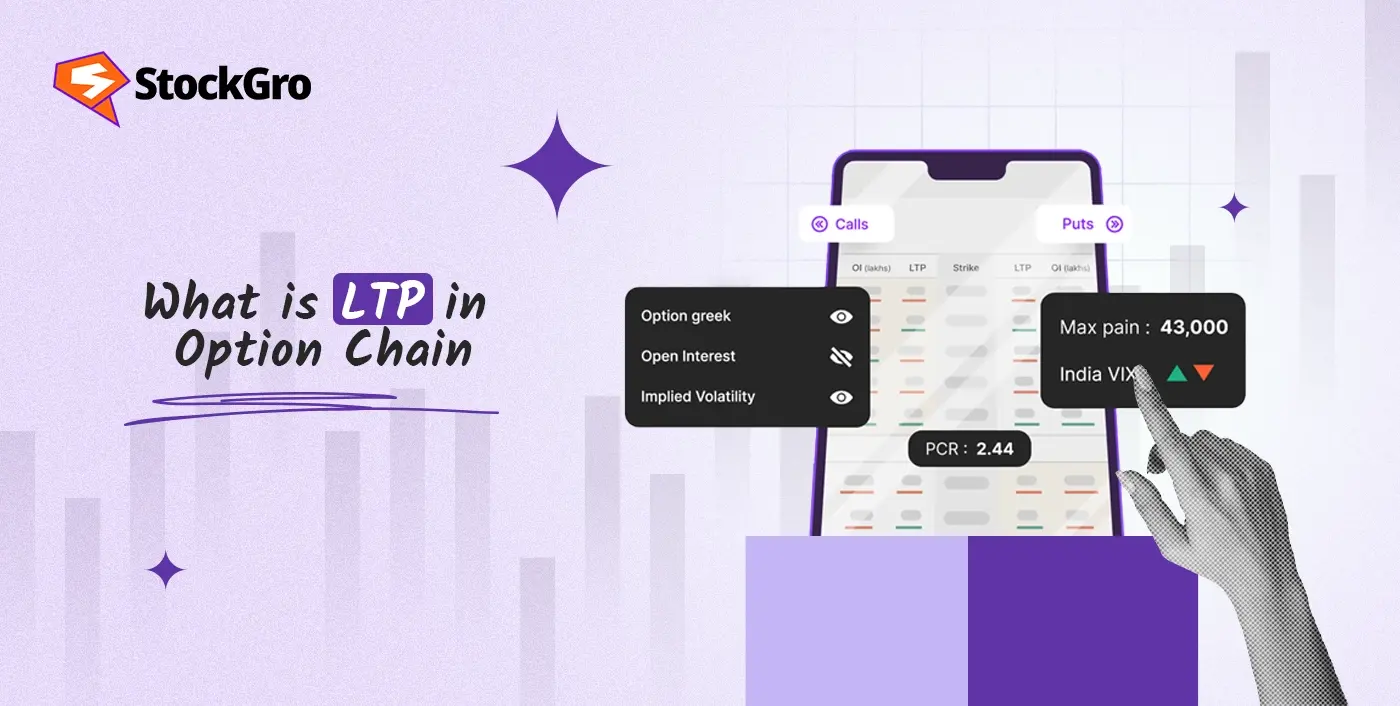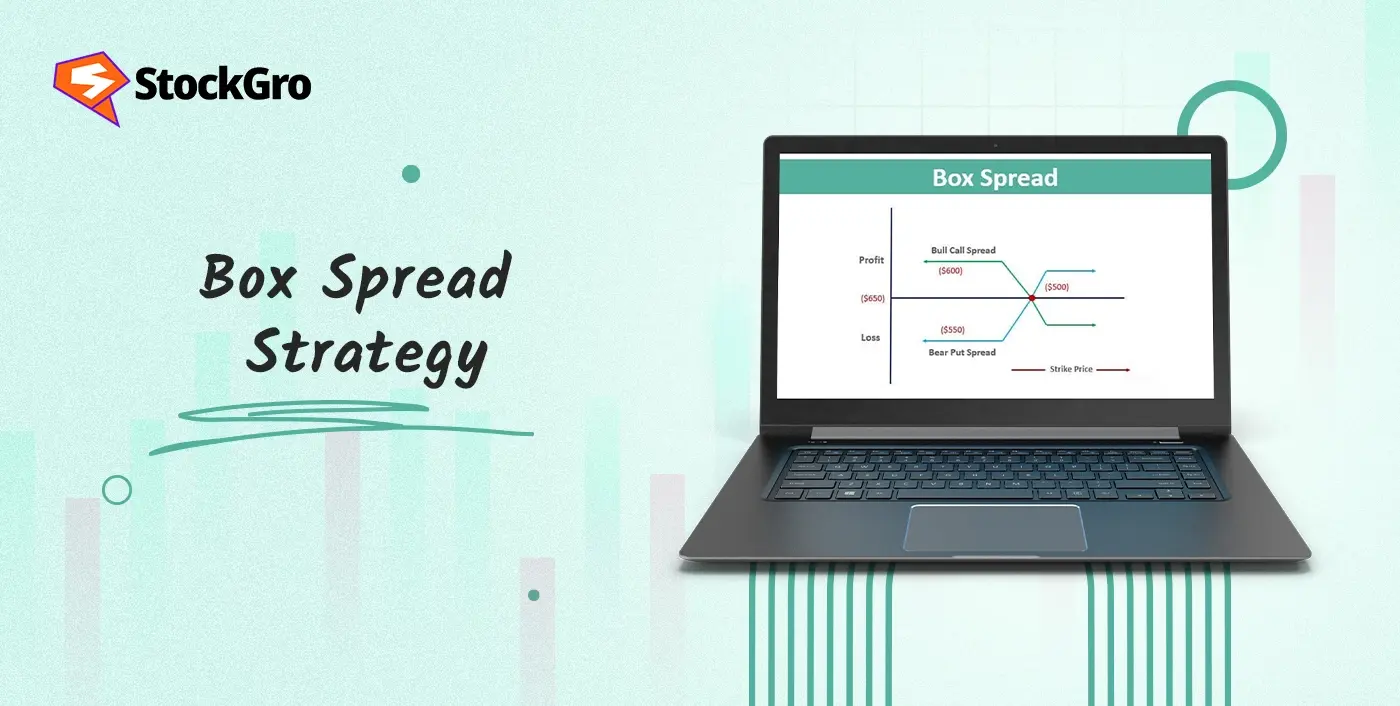
If you have just started exploring stock markets and derivatives trading, you might have come across a bunch of terms that sound confusing at first. One such commonly used word is LTP. When you open an option chain, you will see LTP mentioned along with other values like bid, ask, OI, and IV.
You may be wondering what LTP means in an option chain and why it holds any relevance. The following sections will clarify the concept and outline its role in shaping trading decisions.
What Is LTP in Option Chain?
LTP stands for Last Traded Price in an option chain, which shows the price at which the last trade (buy or sell) took place for a particular option contract.
Let’s say you are checking the Nifty option chain, and for the 19,500 CE (Call Option) contract, the LTP shows ₹120. This means the most recent trade of that contract happened at ₹120.
Think of it like this: if a cricket bat was last sold for ₹2,000 on an ecomm platform, that becomes the current reference price for others looking to buy or sell the same bat. Similarly, in the option trading world, LTP becomes the reference point for traders to decide their next move.
For example:
Suppose you place a buy order for 1 lot of Bank Nifty call options at ₹150.If the seller accepts and executes the trade, that ₹150 becomes the new LTP of that contract.
So, every single buy-sell match in the market updates the LTP instantly.
How Is LTP Defined in Option Chain?
When you open an option chain on NSE or through your broker’s app, you’ll see LTP displayed beside every strike price. This value keeps changing in real time, as thousands of buyers and sellers keep trading.
To make it clearer:
- A strike price with high demand (say, ATM options) will have an LTP that changes quickly.
- A far OTM option with low demand may have very few trades, so its LTP changes slowly.
In short: LTP = the most recent deal between a buyer and a seller of that option contract.
LTP vs. Bid, Ask, and Other Chain Metrics
| Metric | Meaning | Represents | Updated When | Use for Traders |
| Bid Price | Highest price buyers are willing to pay | Buyer’s demand | Whenever a new buy order is placed | Shows how much demand is there at the moment |
| Ask Price | Lowest price sellers are ready to accept | Seller’s supply | Whenever a new sell order is placed | Helps know the minimum sellers want |
| LTP (Last Traded Price) | Price of the most recent transaction | Actual deal between buyer & seller | Each time a trade is executed | Reflects the real action happening in the market |
| Volume | Total contracts traded in a day | Market activity | Intraday updates | Shows popularity of a strike for the day |
| Open Interest (OI) | Total contracts still open (not squared off) | Active market positions | End of day + intraday changes | Helps in trend analysis |
| Implied Volatility (IV) | Expected future volatility of the option | Market expectations | Updates dynamically | Indicates possible price swings |
Why LTP Matters in Trading Decision-Making
For beginners in trading, LTP may look like just a number. But in reality, it’s a very useful reference point. Here’s why:
- Gives You the Current Market Price: You instantly know at what price the contract was last traded. This helps you set your entry or exit level.
- Helps Judge Momentum: If an option’s LTP is moving up rapidly, it indicates strong buying interest. If it keeps falling, sellers are dominating.
- Guides Intraday Trades: Many traders, especially in Bank Nifty weekly options, track the LTP closely to catch intraday moves.
- Acts as a Benchmark: Whether you’re a buyer or seller, the LTP gives you an idea of whether you must adjust closer to the bid or ask to get your trade executed.
How LTP Helps in Price Discovery & Liquidity
Two big terms in stock market lingo are price discovery and liquidity. LTP plays a crucial role in both.
- Price Discovery: It helps traders figure out the fair price of a contract at any given time. You wouldn’t know where the market is really trading without LTP.
- Liquidity Check: If the LTP keeps changing a lot, it suggests the contract is liquid (there are a lot of buyers and sellers). If the LTP rarely changes, the contract might be illiquid.
Imagine standing in a busy street market where prices keep shifting every minute, that’s like a liquid option with active LTP. But if no one is there to purchase or sell, the last price stays the same, which is bad for dealers.
Limitations & Things to Watch Out For
LTP is really important, yet it can often be misleading to exclusively rely on it. Here’s what you must remember:
- Low Liquidity = Tricky LTP: If very few people are trading a contract, the LTP may remain stuck at an old trade. So don’t assume it reflects the latest sentiment.
- Not Always the Best Price to Trade: Just because the LTP is ₹100 doesn’t mean you can enter at ₹100 right now. The actual bid-ask spread might be different.
- Sudden Spikes: In volatile markets, one random trade at an oddly high or low price can make the LTP look misleading.
Pro tip: Always use LTP along with bid, ask, volume, and OI before entering trades.
Conclusion
LTP is one of the simplest yet most powerful numbers in an option chain. It provides you the price of the last deal, which gives you a fast idea of what’s going on in the market.
It is simple to follow and understand. It helps you find momentum, assess liquidity, and make trade decisions more quickly. You should use it with bid-ask spreads, volume, and open interest to get a whole picture before you start or end a deal.
In short: LTP is your starting point, not your final answer. Learn to use it wisely, and it can guide you in navigating option chains with more confidence.
FAQs
LTP tells traders the exact price at which the last deal happened. It shows real market activity, not just quoted prices. By tracking LTP, traders can spot momentum, judge entry and exit levels, and make quicker decisions.
Bid and ask, show what buyers and sellers want. LTP shows where an actual trade happened. Bid and ask are intentions, while LTP is reality—the price at which both sides agreed and executed a deal.
Every new trade updates the LTP, creating a live record of where buyers and sellers meet. This constant update helps the market find the fair value of an option, a process called price discovery.
Yes. In liquid strikes, LTP changes frequently because trades happen often. In illiquid options, LTP may stay unchanged for long periods. Frequent updates in LTP, along with volume, indicate better liquidity and smoother trade execution.
LTP is the price of the most recent trade. ATP, or Average Traded Price, is the average of all trades done during the day. LTP shows the latest action, while ATP gives a broader daily picture.

